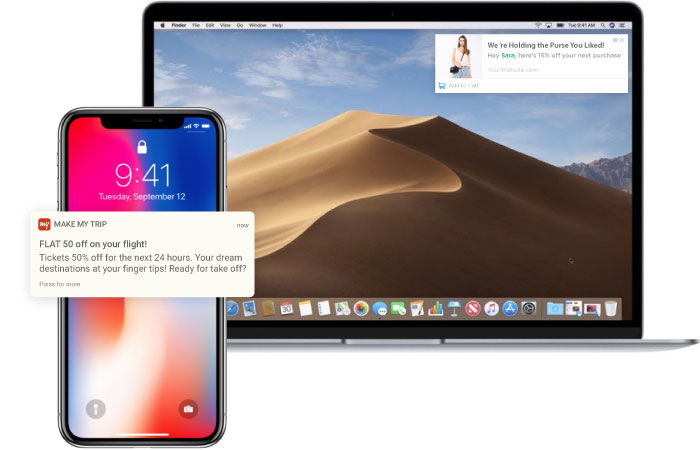
Marketers lose up to $4 trillion annually due to cart abandonment rates that range between 50% and 80%, and the problem is getting worse. However, a 10% decrease in cart abandonment would result in a 20% gain in sales.
Leaving abandoned carts alone is equivalent to leaving large sums of money on the table. The good news is that since they were already thinking about purchasing from you, re-engaging these prospects is quite simple. The easiest way to increase sales right away is to lower the number of abandoned carts.
How to Get Customers to Checkout Again
What is the best strategy for getting customers to return and complete their purchases? There are three methods: push alerts, retargeting ads, and email.
Email Reminders
Nearly half of all emails sent in response to abandoned carts are opened. About 20% of these clients click to go back to their shopping basket, and 10% of them complete the transaction.
However, you don’t have to be content with a 10% reduction in abandoned carts. By including discounts in subsequent emails, you can further entice customers and raise conversion rates to 29%.
However, one drawback of email is that individuals receive a tonne of it every day. They won’t likely go back to their cart if they get a follow-up email at a bad moment. If they don’t return at that time after opening them, they might forget to do so later.
Retargeting Facebook Ads
The custom audience function in Facebook advertisements is one useful feature that enables you to retarget website visitors. Retargeted advertising were discovered to be “twice as effective” as other strategies in a Comscore and ValueClick study.
By eliminating one of the main causes of abandoned carts, free delivery might make retargeting advertisements even more effective.
People that are retargeted are 26% more likely to come back and finish the checkout process, according to Digital Information World.
Retargeting advertising have the drawback that some viewers could not even notice them. They filter out these adverts because their minds are already overloaded with information, losing out on conversion opportunities.
Notifications through Push
With continually greater click through rates, push notifications have shown to be even more effective than email or retargeting ads.
Push notifications have click-through rates for cart abandonment ads that are 37% greater than email. Push notifications reach and convert 500% more people than email as a result of an increase in both opens and CTR.
People wait an average of 6 hours to open an email after it has been delivered, which is the cause of this. However, push alerts are immediately visible in real time. Users who choose to get notifications are thus 4 times more likely to make a purchase than users who do not.
Guidelines for Conversion
Using all of these channels at once allows you to amplify the impacts of push notifications, which are statistically more effective than email or retargeting ads.
You may be sure that using email, retargeting advertisements, mobile and online notifications will increase the number of clients who were prepared to spend their credit cards for you. For instance, Product Hunt doubled its results by combining email and push notifications. Utilizing push notifications that target abandoned carts, Princeton Review was able to increase conversion by 4 times (read case study).
Regardless of the channel you choose for retargeting your consumers, you should always include a link to their basket to make it simple for them to return with just one click.
But how frequently and when should you follow up? The solution to this question has undergone extensive testing and revision. The practise of sending messages at predetermined intervals has proven successful for many businesses.
One to two hours after clients abandon their shopping carts, the first communication should be sent.
At least 24 hours should pass before sending the second message.
A few days later, a last message ought to be delivered.
Waiting beyond these windows increases the chance that users will entirely forget about you.
Mok.on makes it simple to automate messages and target customers who leave shopping carts empty. To learn more, consult the documentation.